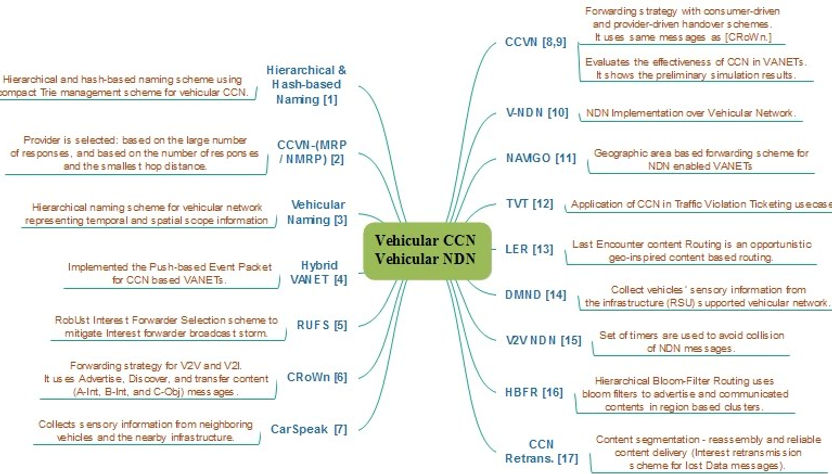
IoT Domains (Sensor and Ad hoc Networks)
I mainly focused my research in the sensor and ad hoc network areas on the routing and medium access domains. However, I have implemented and tested the sensor network performance on the real testbed of MicaZ motes. In routing domain, my primary objective has been to minimize resource consumption of the network by reducing the control and other network traffic without compromising the data communication efficiency. In sensor networks, I have directed my research on the access control mechanism to increase network performance in terms of increased data delivery and maintaining the fairness among the nodes.

Vehicular Networks (VANETs): are reality of the near future and play vital role in everyday life by providing services e.g. safety and comfort of passengers on the drive, infotainment, etc. The network comprises of vehicles with communication capabilities. One of the most prominent characteristic of the VANET is its highly dynamic topology that makes it challenging to propose any efficient and promising communication solution. Along with that it is also proved by many researchers that TCP/IP communication protocol stack is inefficient for mobile networks. This is the reason that a separate protocol stack for VANETs called the “Wireless Access in Vehicular Environments” (WAVE) has been proposed. WAVE supports data exchange without the TCP/IP overhead, through WAVE Short Message Protocol (WSMP) that was designed for safety critical and control messages.
Recently, there has been a lot of research with the intention to reliably communicate emergency information, traffic status, vehicle sensory data, and infotainment information in a non-host centric manner by using information-centric communication mechanism. Content-centric approaches for VANETs are briefly summarized below in the connectivity following Figure.
Content Naming Scheme for Vehicular Networks
URL: monet.knu.ac.kr/images/people/safdar.jpg
Name: /knu/monet/images/people/safdar/jpg/date/20151131/res/500/800



